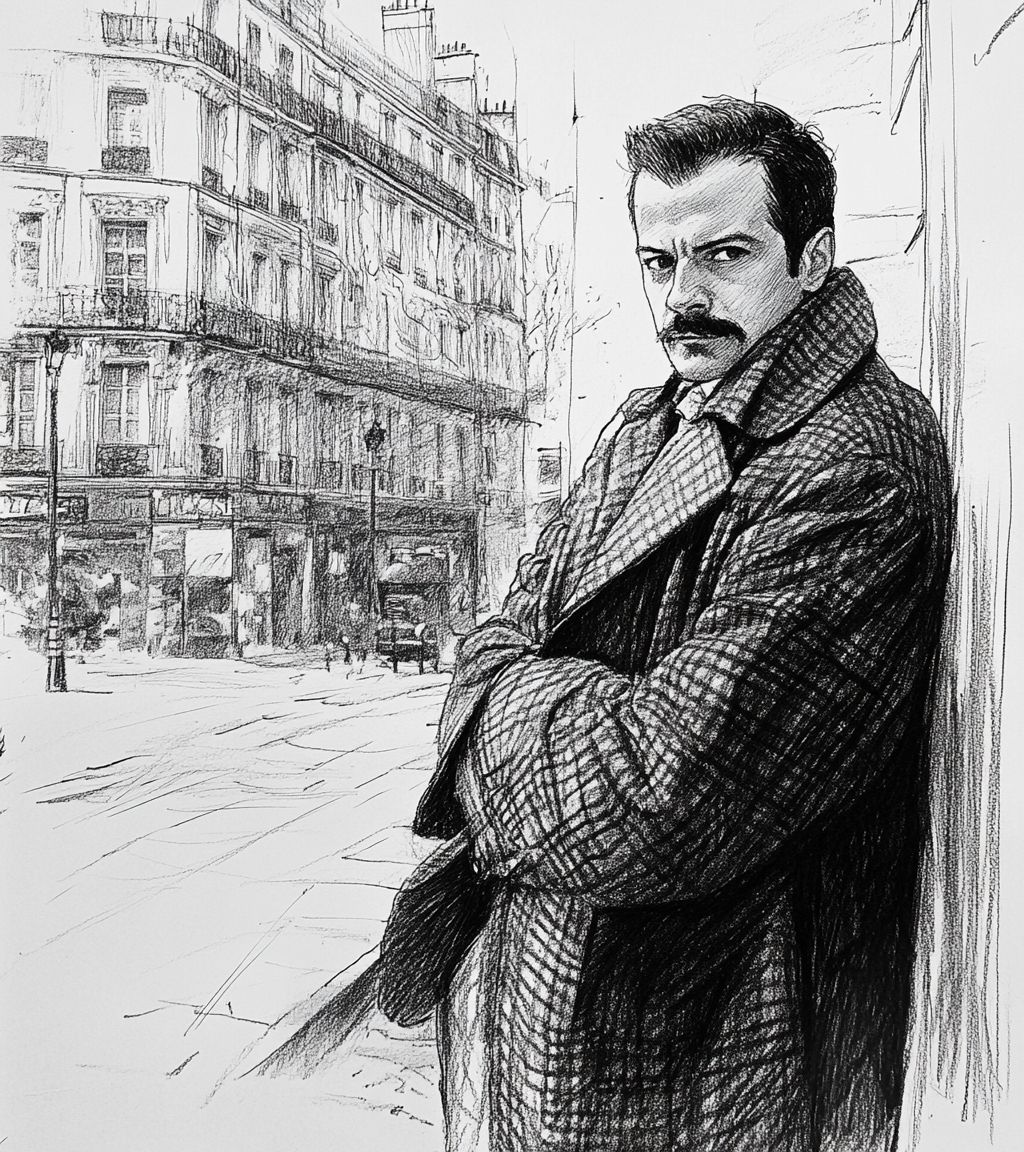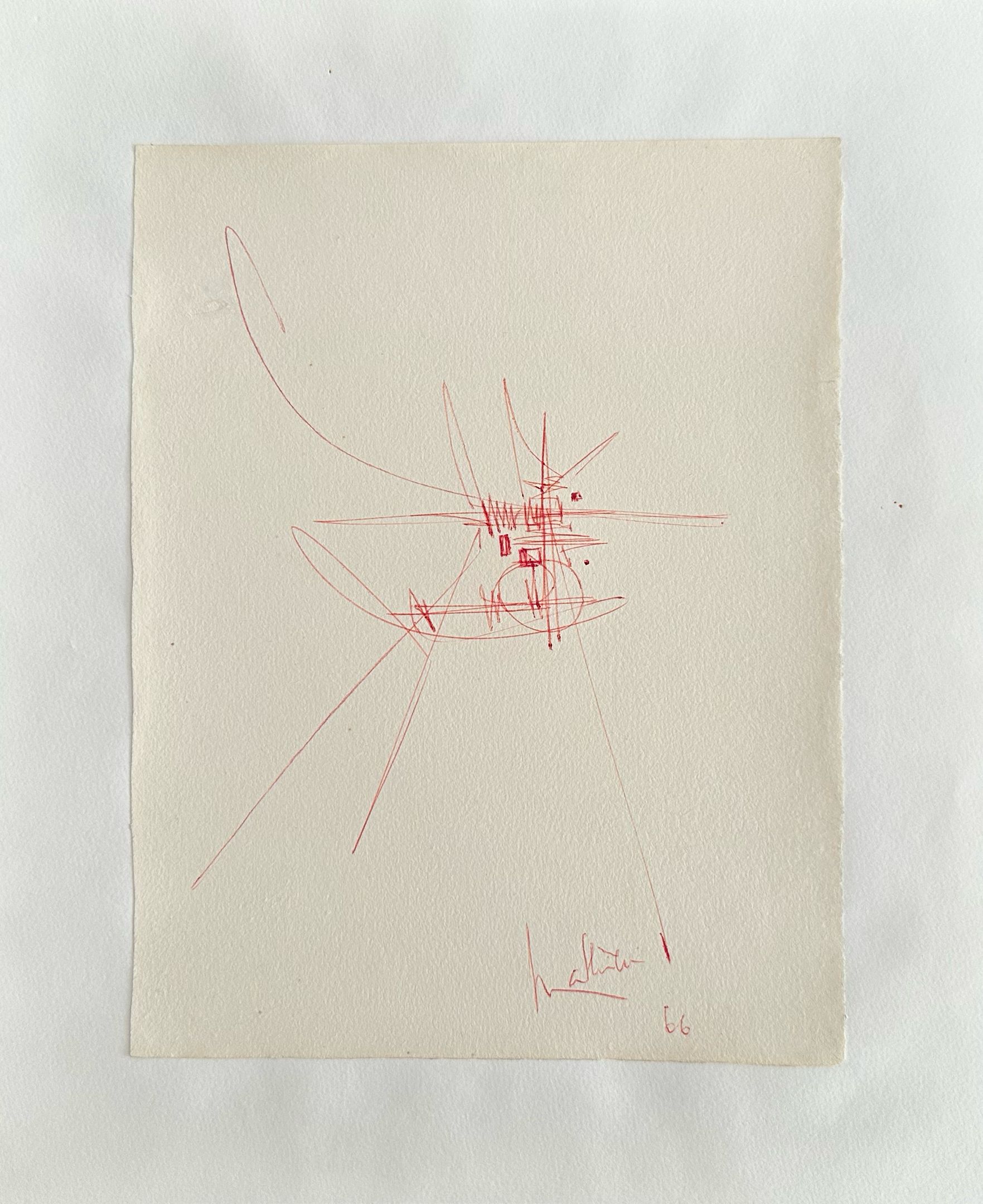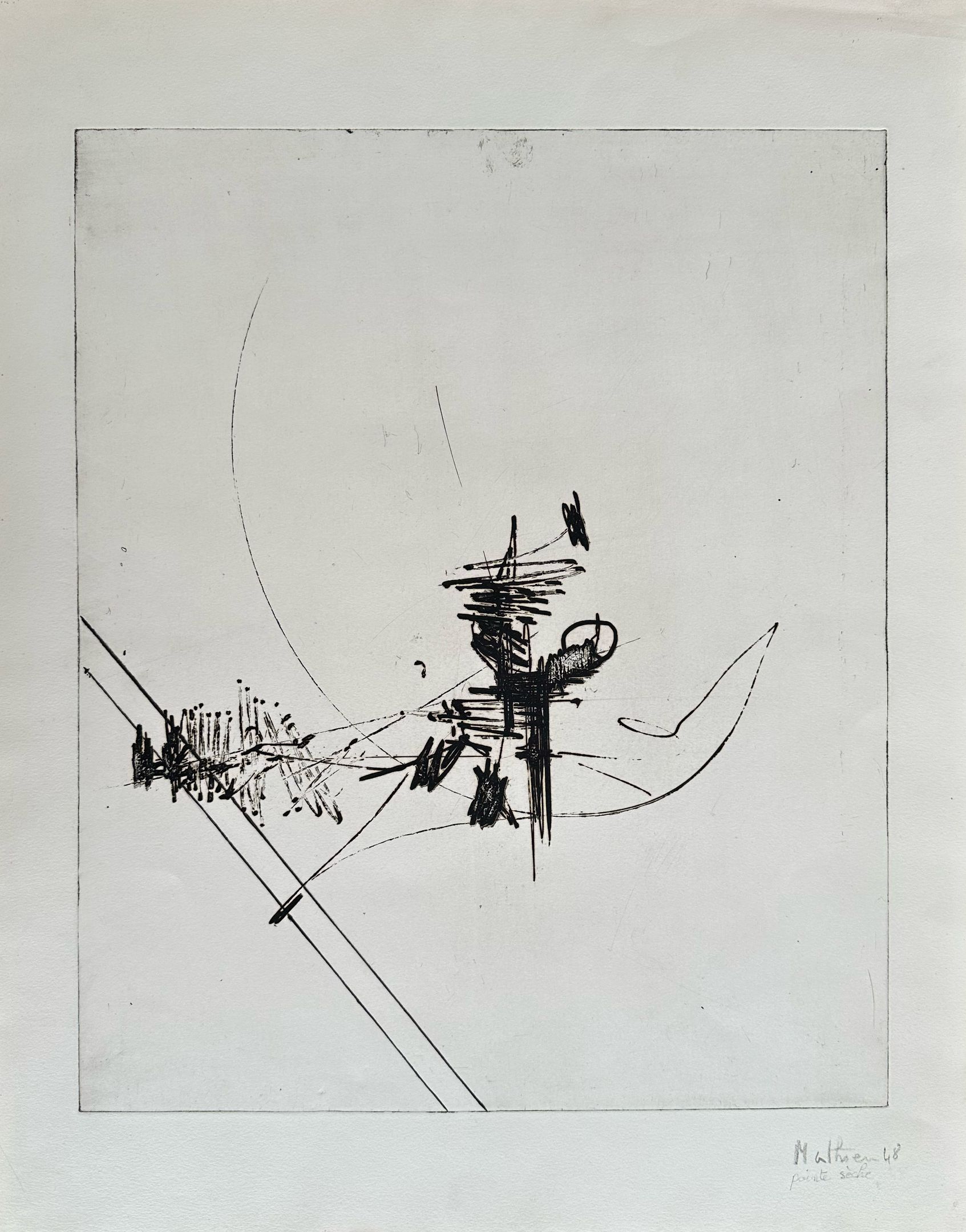
Georges Mathieu
Georges Mathieu initially studied law and literature before shifting his focus to painting during the 1940s. Moving to Paris in 1947, he quickly became a central figure in the emergence of lyrical abstraction, organizing groundbreaking exhibitions like L’imaginaire (1947) and HWPSMTB (1948). Through these, he brought together artists such as Hans Hartung, Francis Picabia, and Wols, advocating for a spontaneous, emotional approach to abstraction. He soon gained international recognition through live painting performances, where he would create large-scale canvases in front of audiences using expressive, rapid techniques.
Mathieu’s painting style is characterized by explosive, calligraphic gestures created at great speed, often using paint applied directly from the tube. Influenced by Surrealist automatism and American action painting, his dynamic compositions prioritize intuition, energy, and immediacy over formal structure. As a pioneer of "tachisme" — the European counterpart to abstract expressionism — Mathieu’s works often reference French history and myth, with titles alluding to battles, monarchs, and philosophical themes. His practice blurred the lines between painting and performance, positioning the act of creation as an expressive and even spiritual event.
Mathieu represented France multiple times at the Venice Biennale starting in 1950. He also participated in four editions of Documenta. His works have been shown in major retrospectives across Europe and Asia, including a celebrated 2024 exhibition at the Long Museum in Shanghai and a major survey at Monnaie de Paris in 2025, organized in collaboration with Centre Pompidou. Galleries such as Perrotin have also hosted shows of his work in cities like New York and Seoul, reaffirming his legacy as a visionary of postwar European abstraction.


